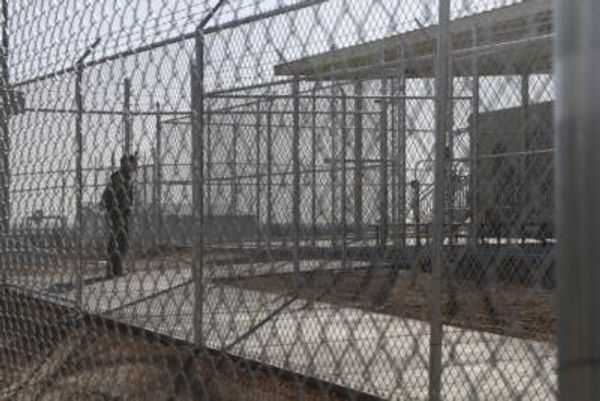
Once upon a time, the most powerful bottoms in Parliament House sat on the government frontbench, the first row of seats to the right of the speaker in the House of Representatives, or the president in the Senate. The opposition frontbench, over on the left, could also be a potent place to sit, although its occupiers dearly longed to plant their cheeks on the pew across the chamber.
There were other influential seats: the speaker’s and president’s chairs were commanding in their own right, as were those of the kingmakers who held the balance of power in the Senate. There were important bums on seats in important offices; staffers and donors and lobbyists and apparatchiks who had the ears — or in some cases, total control — of the ministers.
But it was the frontbenchers who, on the surface, set the political agenda, speaking for the majority, deciding what would and would not pass the people’s house. Our two (and a half) party system dictated this focus on the front row: a winners-take-all approach. Those on the special benches ran Parliament and the country, and both sides fell in lock-step with them in the hope they’d get a go on the special benches again soon.
But over the past few years, a shift has been taking place (whether or not the current crop of frontbenchers have fully recognised it is another story).
At the 2022 federal election, just shy of one-third of voters gave their first preference to a candidate not from a major party, leading to a record-breaking 16-member lower house crossbench (the bench has since grown to 18, three more than sit in the Nationals partyroom). The Senate crossbench has since risen to 19, the largest since group tickets were abolished, with independents David Pocock, Ralph Babet and Tammy Tyrrell all getting up without the help of murky preference flows (and with David Van joining as an independent following his expulsions from the Liberal partyroom).
The 2022 election was not an aberration: that disenchanted third continues to make itself known, with new modelling from RedBridge and Accent showing around 20 seats in play for minors and independents (the Nationals’ NSW seat of Cowper is predicted to go indie, although Dai Le’s Fowler may return to Labor).
The model puts a hung Parliament and a Labor majority as almost equally likely outcomes, with no chance of a Coalition majority. Disappointed progressives have been actively looking forward to a hung Parliament for some time now — there’s reason to believe Labor’s electoral reforms are about trying to head off this possibility, disadvantaging minor parties and independents rather than interrogating their appeal. Equally, there are a number of players like Shit Rentals founder Purple Pingers pointing to the serious frustrations being felt by disenfranchised voters, the grifters orbiting around the very dissatisfied, very online Gen Z, and far-right movements like Advance building in numbers.
Given all this, it’s a wonder more attention isn’t paid to this growing third force — a force that looks set to bring with it new power arrangements in the coming years. Admittedly, we don’t yet have that hung Parliament; this term’s crossbench has limited influence. But many voters are indicating they’ve had enough of the duopoly and are ready for something more complex.
So who are the people who may soon hold the keys?
“Forget the Frontbench”, my new column with Crikey, will take a look at the figures upending Australian federal politics, with a weekly portrait of the power players beyond the ministry.
Who are the “Double Haters”, the one-third of voters looking elsewhere, and what do they want? How will minor parties and independents seek to use their balance of power in the next Parliament, if that is indeed what they receive? Will backbenchers like Bridget Archer and Fatima Payman start to break away from their parties, as they realise this way power lies? What should we expect from those who have left (or been kicked out of) theirs, like Lidia Thorpe, Andrew Gee and David Van?
What can we learn from the likes of Julia Banks, Cathy McGowan and the interregnum twins Rob Oakshott and Tony Windsor? Will the Greens build on their power base, and why does Max Chandler-Mather drive the PM so absolutely bonkers? How will the teals — representing seven of the 10 wealthiest electorates in the country — respond when forced to make hard choices on inequality, and can they score another term like Zali Steggall?
What’s Bob Katter up to these days? Can Jacqui Lambie keep her self-titled party together, and how is she faring in the wake of her Tasmania triumph? And when will the majors be ready to confront the fact that the days of majority rule may be behind them?
We are now less than 12 months out from the next federal election. Labor leaders will no doubt be hoping to claw back some votes as inflation moderates; the Coalition will be hoping its anti-migration push does something other than confuse Angus Taylor.
The third force will have some ideas of its own, and it would be foolish for the major parties not to pay attention. Things are changing in the seat of power, and the true seats of power may soon belong to those best able to listen.
Next week: Which crossbencher is absolutely dominating TikTok right now, speaking to young voters on socials in a way the major parties could only dream of?
Who else should Crikey focus on? Let us know your thoughts by commenting below or writing to letters@crikey.com.au. Please include your full name to be considered for publication. We reserve the right to edit for length and clarity.







